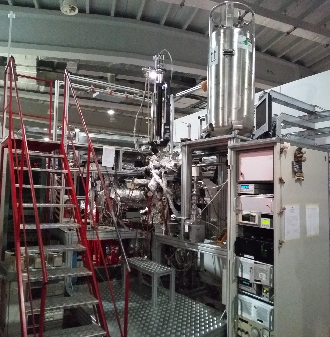Band Dispersion and Electron-Phonon Coupling (BaDElPh)
Elettra Sincrotrone Trieste

The Band Dispersion and Electron-Phonon coupling (BaDElPh) beamline provides photons in the energy range 4.6-40 eV with high flux, high resolving power and horizontal-vertical linear polarization. The beamline serves an end station to perform primarily high-resolution angle-resolved photoemission spectroscopy (ARPES) experiments in the low photon energy regime. Photon energies lower than 15 eV provide enhanced bulk sensitivity, allow for the highest momentum and energy resolution and are useful in tuning matrix elements that vary rapidly at low energy. The availability of such low photon energies makes BaDElPh unique among the other ARPES beamlines at Elettra and around the world. BaDElPh is a state-of-the-art high-resolution low-energy ARPES system and it is an ideal tool for investigating the electronic structure and many-body effects (electron-phonon, electron-electron etc.) in solid materials, such as superconductors and strongly correlated materials, metal / semiconductor surfaces, organics / inorganic films, nanostructures, etc. The instrument is ideal for the characterization of systems with a small Brillouin zone (organic films etc.) and of materials in which the electronic structure may be different between the surface and bulk (i.e. strongly correlated materials, buried interfaces, capped samples etc).
Contact: Luca Petaccia
Tel: +39 040 375 8824 (office) | +39 040 375 8652 (beamline)
Applications and sample environment
The sample manipulator has four degrees of freedom (xyz translations and polar rotational axes). An additional angular degree of freedom (azimuthal rotational axis) is available using a suitable sample holder. Various sample holders, capable of accommodating transferable samples, can be mounted on a cryostat that, with liquid helium, reaches a temperature lower than 5 K. A sample holder with motorized azimuthal angle allows the acquisition of computer-controlled Fermi surface maps with high angular accuracy (about 0.02°). Samples must be resistant to radiation damage and conductive for photoemission measurements. Insulating samples are practically impossible to measure due to charging effects. If special sample mountings are required, please contact the beamline responsible well in advance in order to plan suitable solutions. Detailed information can be found on the beamline’s main homepage.



